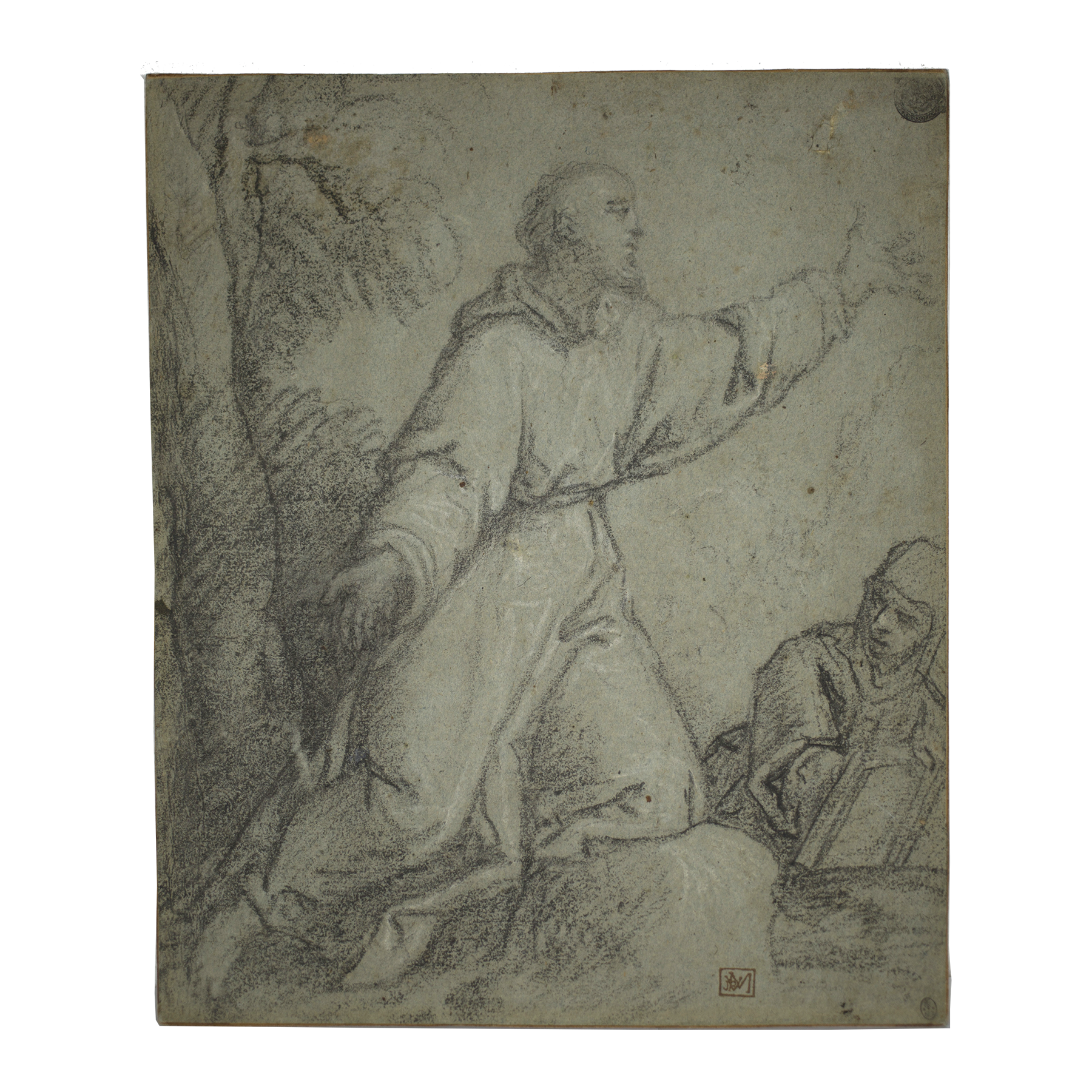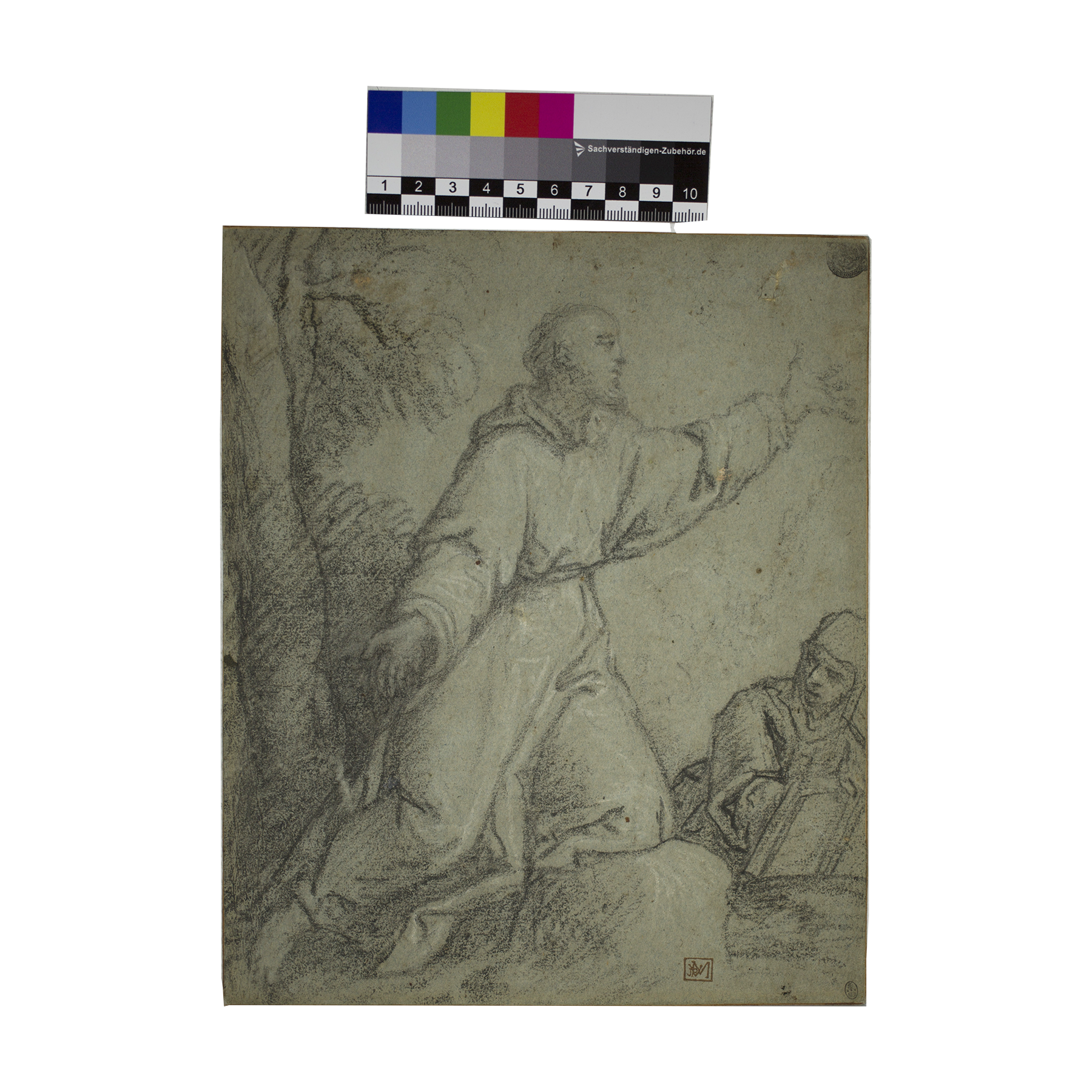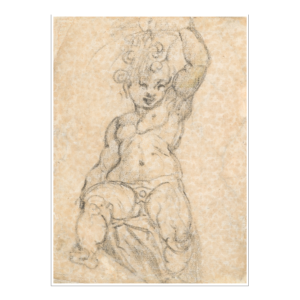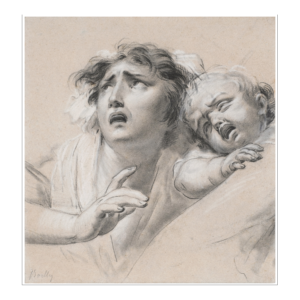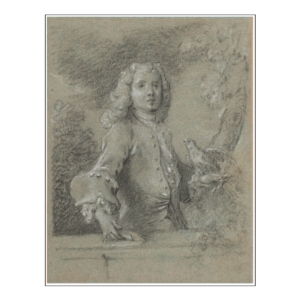Fra Semplice da Verona called Il Cappuccino Veronese
Verona, 1589 – Roma, 1654
Study of St. Francis and a Monk Reading
Black chalk and white highlights on blue paper.
236 x 196 mm – 9 5/16 x 7 11/16 in.
Inscribed “Luca Signorelli” in pencil and ink on the back. Inscribed “Collection JPV Mazies” on back in ink. Two crossed-out signatures in ink and number 211/31 in pencil.
Stamps of Alphonse IV d’Este(Lugt 106) top right, Vivant Denon (Lugt 779) and J. P. V. Maziès(Lugt 1919 ) bottom right.
Fra Semplice da Verona, born in Verona under an unknown lay name, is a singular figure in Italian Baroque painting. A monk of the Capuchin order, he was one of the most active artists of his time, traveling throughout Italy to carry out prestigious commissions while respecting the humility of his religious rule.
Born around 1589 in the city of Verona, he was introduced to the pictorial arts at an early age in the studio of local painter Felice Brusasorci (1555-1605). After his master’s death, he continued his apprenticeship and came into contact with other renowned Veronese artists such as Marcantonio Bassetti (1584-1630) and Alessandro Turchi (1582-1649).
On August 25, 1613, he entered the novitiate of the Capuchin Friars Minor. This vocation did not put an end to his artistic career; on the contrary, art became his instrument of preaching and edification.
His career was marked by constant mobility, dictated by the needs of his order or external commissions. Thanks to his talent, he quickly won commissions from high society. He worked for the ducal court of Parma under Ranuce I Farnese, and for the Gonzagas in Mantua (1620-1621). These princely contacts testify to the esteem in which the monk-painter was held, despite the restrictions of his order. After these forays into secular patronage, he increasingly worked for Capuchin convents in Veneto (Castelfranco, Vicenza) and other regions (L’Aquila, Lugano). His works illustrated Franciscan spirituality and the Counter-Reformation, focusing on the lives of saints, the mysteries of faith and edifying scenes. One or more stays in Rome were crucial to the evolution of his style. It was here that he came into contact with developments in the Roman Baroque and the work of Caravaggio, his followers and the Bolognese school of the Carracci.
Fra Semplice da Verona died in Rome on December 11, 1654. Although he was sometimes considered a mere follower of more famous painters (Veronese or Correggio), the rediscovery of his drawings and the reattribution of several canvases have re-established him as a talented artist and a significant player in the Italian Baroque in the service of his order.
This drawing can be compared with studies on blue paper preserved at the Detroit Art Institute, the Offices in Florence, the Royal Museum in Copenhagen or on the market over the last twenty years.
Condition report – Good overall condition. A few micro-stains.
Antique Berain frame in gilded wood.

